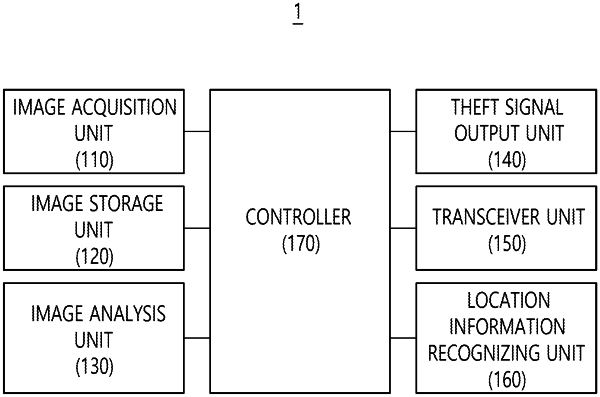| CPC G06V 20/56 (2022.01) [G06V 10/56 (2022.01); G06V 20/59 (2022.01); G08B 13/19647 (2013.01); H04N 23/667 (2023.01)] | 6 Claims |

|
1. A dash cam with an anti-theft function, the dash cam comprising:
an image acquisition unit configured to capture an image;
a housing, in which the image acquisition unit is built in, mounted inside a vehicle so that the image acquisition unit images a space including at least a portion of a part constituting the vehicle;
an image storage unit configured to store a first image and a second image captured by the image acquisition unit;
an image analysis unit configured to compare the first image with the second image and determine whether the vehicle in which the housing is mounted has been changed; and
a theft signal output unit configured to output a preset theft occurrence signal based on a determination that the vehicle has been changed by the image analysis unit,
wherein the image analysis unit is configured to determine whether the vehicle has been changed by comparing a reference region in which the part appears in the first image and a comparison region corresponding to the reference region in the second image,
wherein the image analysis unit includes a parts identification algorithm set to identify the part based on an image recorded in the image storage unit,
wherein the first image includes a plurality of previous images captured before the second image is captured,
wherein the parts identification algorithm identifies, as the part, a region in which a color-related value maintains a preset difference or less in the different previous images, and
wherein, based on the output of the theft occurrence signal, the image acquisition unit is switched to a function limiting mode in which image capturing is stopped.
|